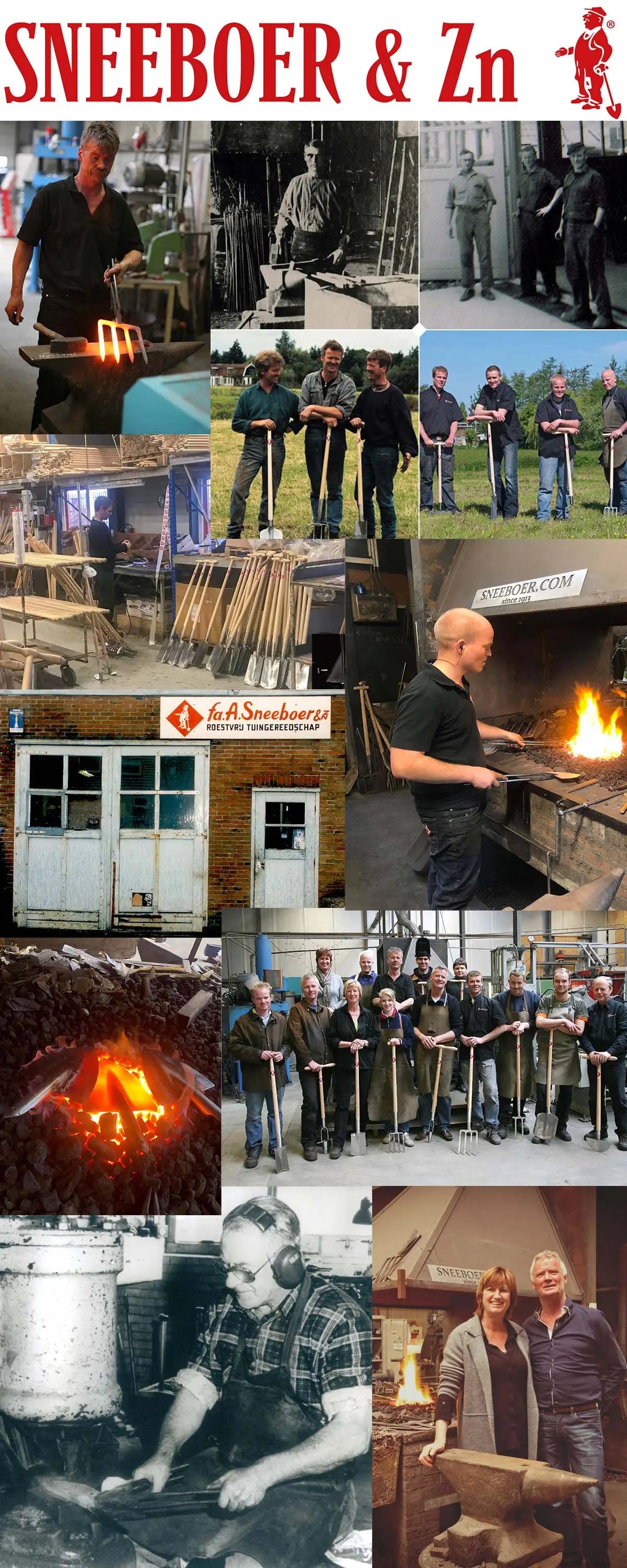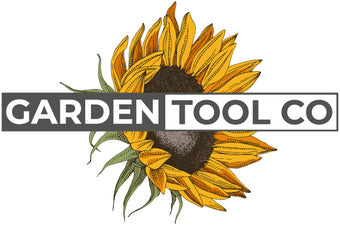About Sneeboer
Handmade is a term not heard much these days, but as you'll see in the video above, the Sneeboer family still hand crafts each tool combining traditional hand forging and modern technologies.
Sneeboer hand forged Dutch garden tools have been handcrafted in Holland since 1913 and are considered the finest quality garden tools available anywhere in the world. Each Sneeboer garden tool is hand forged from stainless steel and individually shaped, sharpened and polished. All tools are fitted with hardwood handles from FSC Certified forests.
Today, the team of artisans at Sneeboer is mainly comprised of family members with 4th generation Sneeboers at the helm, all of whom are following the words of founder Arie Sneeboer ~ "One who once has held a Sneeboer tool in his hands never wants anything else"
Sneeboer's Sustainability
- Since 2021 Sneeboer has made major investments in solar panels and new, energy efficient machines which all culminated in the purchase of an induction generator which allows us to heat our stainless steel alloy to the desired temperatures in mere seconds with electricity instead of minutes with fossil fuels. This machine has allowed us to not use the coal fires since July 2023 so since that moment all Sneeboer tools are produced CO2 and energy neutral. This means that the blade is not heated by coal (2-4cm big cokes to be precise) but by the induction machine before it is forged by hand and all other machines have been powered by electricity from our solar panels. Currently, we generate around 2x the amount of energy (96,000kWh) per year then the entire company uses and we have plans to decrease our energy consumption even further so we give more green energy back to the Dutch electricity grid.
- Sneeboer has changed all the lighting in the company to energy efficient LED lighting and all heating is done by electric infrared heaters. Natural gas is no longer used in the entire company.
- They have also implemented a very new welding technique called laser welding to weld the parts together. Laser Welding makes very focused welds which decreases the amount of energy used that is usually wasted because it is absorbed by the materials. Laser Welding uses a wobbling laserbeam that welds the two parts together which creates unbelievably strong and effective welds, removing the need to grind the weld down which decreases the amount of abrasive material needed to get the final “Sneeboer'' polished stainless-steel look. This cuts down on our work process and the amount of abrasive materials that are needed.
- The wooden handles are made in the Czech Republic by a supplier that is focusing more on sustainability. Their heating for instance is an efficient burning of the shavings of wood when they make the handles. This supplier has the FSC, PEFC and ECO-COM certificates.
- All metal shavings are recycled and long handles that cannot be used because of defects are reworked on a lathe to make smaller handles for hand tools. This way, we effectively reduce our waste to nothing.

- Back to Sneeboer Garden Tools -
Sneeboer Guarantee
Each unique piece of Sneeboer tool is made for life, but if there are any problems with your tools, please let us know. Our products have a 1-year warranty on the wooden handles and a 50-year warranty on the steel, stainless steel and titanium parts. If you have any questions or would like to claim under the warranty, please send an email with a photo to sales@sneeboer.com or contact the nearest Sneeboer dealer .
When we offer a replacement tool we will do our best to offer the same tool. If this is not possible, we will provide an alternative but comparable tool.
The following causes of damage are not covered by our warranty:
- Normal wear and tear of the parts, missing or broken parts or parts that have been adjusted or changed by you.
- Damage due to incorrect use of the product, i.e. when a tool is used in a way for which it was not designed. An example is when a spade breaks because it is being used as a crowbar.
- When the tool is damaged because it has not been properly maintained or stored. An example is when tools are left outside all year round while they need to be stored in a dry place.
- These warranty conditions also do not apply if a tool has suffered cosmetic damage that does not affect the function of the tool.
